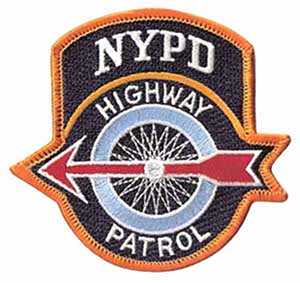
The Highway Patrol are specialized units part of the Highway District with the Transportation Bureau of the New York City Police Department. The Highway Patrol is primarily responsible for patrolling and maintaining traffic safety on limited-access highways within New York City. The Highway Patrol's other duties and roles include accident investigations, advanced driver and radar/laser speed enforcement training for NYPD officers, field sobriety testing at the various testing locations in each Patrol Borough, dignitary and parade escorts, hazardous material and truck traffic enforcement, anti-drag racing programs, and anti-terrorist checkpoints at key bridges and intersections in the city.
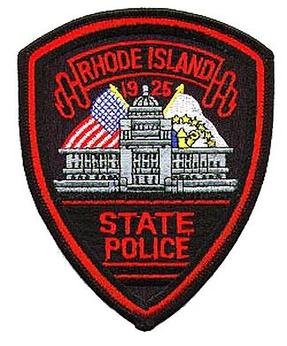
The Rhode Island State Police (RISP) is an agency of the US state of Rhode Island responsible for statewide law enforcement and regulation, especially in areas underserved by local police agencies and on the state's limited-access highways. Its headquarters is in North Scituate.
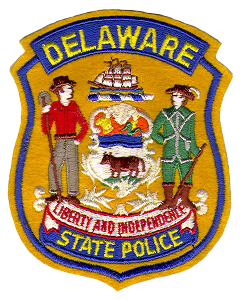
The Delaware State Police (DSP) is a division of the Delaware Department of Public Safety and Homeland Security and is responsible for traffic regulation and law enforcement across the US State of Delaware, especially in areas underserved by local police departments. The DSP is headquartered in the capital Dover, Delaware.
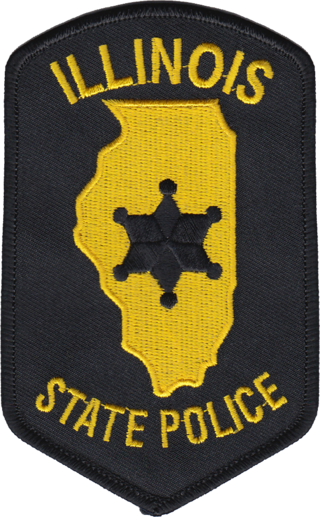
The Illinois State Police (ISP) is the state police agency of the U.S. state of Illinois. The Illinois State Police is responsible for traffic safety on more than 300,000 miles of total roadway, including 2,185 miles of interstate highways and 15,969 miles of state highways. Currently, almost 3,000 sworn and civilian personnel make up the Illinois State Police.

The New York State Department of Environmental Conservation is a department of New York state government. The department guides and regulates the conservation, improvement, and protection of New York's natural resources; manages Forest Preserve lands in the Adirondack and Catskill parks, state forest lands, and wildlife management areas; regulates sport fishing, hunting and trapping; and enforces the state's environmental laws and regulations. Its regulations are compiled in Title 6 of the New York Codes, Rules and Regulations. It was founded in 1970, replacing the Conservation Department, and is headed by Basil Seggos.

The Texas Highway Patrol is a division of the Texas Department of Public Safety and is the largest state-level law enforcement agency in the U.S. state of Texas. The patrol's primary duties are enforcement of state traffic laws and commercial vehicle regulation, but it is a fully empowered police agency with authority to enforce criminal law anywhere in the state. Also, they respond to emergencies on Texas’s highways. Highway patrol troopers are also responsible for patrolling the state Capitol Complex in Austin and providing security to the governor. The current Chief is Lieutenant Colonel Dwight Mathis.
There are forty-five local police agencies in Westchester County, New York. As well as other agencies. They are responsible for protecting Westchester County, these agencies frequently work with one another in the surrounding counties. Current economic times has caused a few Westchester municipalities to consider consolidation of police services. The Westchester County Department of Public Safety started providing primary police services for the Town/Village of Mount Kisco in 2015.
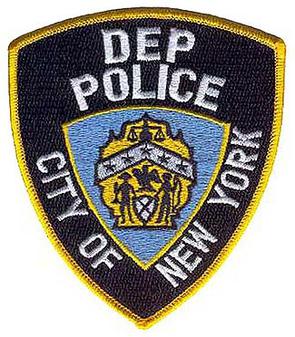
The New York City Department of Environmental Protection Police, also known as DEP Police, and formerly known as the Bureau of Water Supply Police and the Aqueduct Police, is a law enforcement agency in New York City whose duties are to protect and preserve the New York City water supply system maintained by the New York City Department of Environmental Protection, the nation's largest single source water supply. The department has protected and preserved the water supply system for over 100 years.

A conservation officer is a law enforcement officer who protects wildlife and the environment. A conservation officer may also be referred to as an environmental technician/technologist, game warden, park ranger, forest watcher, forest guard, forester, gamekeeper, investigator, wildernessofficer, wildlifeofficer, or wildlife trooper.

The Maryland Natural Resources Police (NRP) is the law enforcement arm of the Maryland Department of Natural Resources (DNR), tasked with enforcing laws on the state's public lands and waterways, protecting fish and wildlife, and leading search and rescue efforts. The Natural Resources Police is also the state's maritime homeland security agency.

The New York State Park Police (NYSPP), is the law enforcement agency of the New York State Office of Parks, Recreation and Historic Preservation.

New York State Wildlife Management Areas (WMAs) are conservation areas managed by the New York State Department of Environmental Conservation (NYSDEC) primarily for the benefit of wildlife, and used extensively by the public for hunting, fishing, and trapping. As of 2016, the NYSDEC owns and maintains 113 WMAs, with a total area of approximately 197,000 acres. The Wildlife Management Areas program is administered by the Division of Fish, Wildlife and Marine Resources of the NYSDEC.

The New York State Forest Rangers, is one of the law enforcement agencies of the New York State Department of Environmental Conservation, Division of Forest Protection. NYS Forest Rangers are New York State police officers, authorized to enforce New York State Laws, Rules and Regulations, and carry firearms.
Michigan Conservation Officers also known as Michigan DNR Law Enforcement Division are conservation officers who are the enforcement branch of the Michigan Department of Natural Resources. Their primary duty is to enforce the environmental laws in the State of Michigan. Michigan Conservation Officers are fully commissioned peace officers and are empowered to enforce all the laws of the State of Michigan.
Law enforcement in New York City is carried out by numerous federal, state, city and private agencies. New York City has the highest concentration of law enforcement in the United States.
Law enforcement in New York State is primarily conducted by Police Officers employed by State, City, County Police departments. A number of State, City, Educational, and private companies employ Peace/special patrolmen.

The North American Game Warden Museum is a museum in the International Peace Garden on the Canada–United States international border between the Canadian province of Manitoba and the U.S. state of North Dakota. The museum is located on the American side of the border. Initially founded on a temporary basis at the International Peace Garden in the 1990s, it became a permanent museum in 2005.

The Massachusetts Environmental Police is a Massachusetts, US, state government law enforcement agency, which is the primary enforcement agency of Massachusetts's boating and recreation vehicle laws and regulations and is responsible for registering boats, off-highway vehicles and snowmobiles in Massachusetts. The agency is also responsible for the enforcement of fish and game laws, including commercial and recreational harvesting of the living marine resources along the state's coastline.
The State Environmental Quality Review Act (SEQRA) is a stipulation enacted by the state of New York that all local and state government agencies must uniformly reflect the environmental impacts when considering taking social and/or economic factors into action.
















